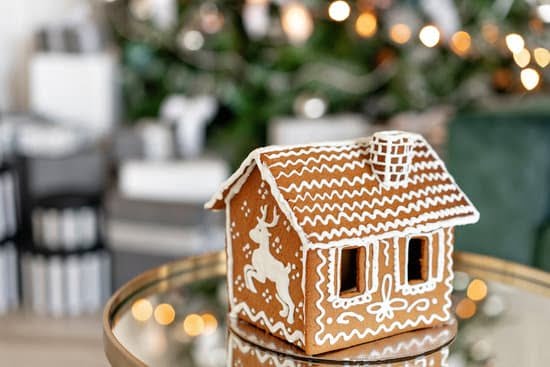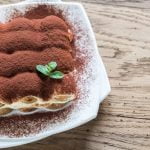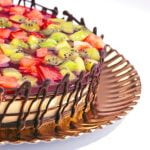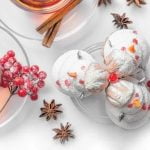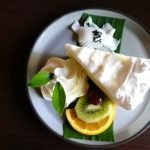Are you eager to learn how to decorate a cake with icing sugar as a beginner? Decorating a cake can be a fun and rewarding experience, allowing you to express your creativity and showcase your baking skills.
In this article, we will explore the art of decorating a cake with icing sugar, providing you with step-by-step instructions and helpful tips for beginners. Whether you are preparing for a special occasion or simply want to elevate your homemade cakes, mastering the art of cake decoration is a valuable skill that you can enjoy for years to come.
Decorating a cake with icing sugar is not only visually appealing but also adds flavor and texture to your baked creation. We will guide you through essential tools and ingredients needed for beginners, offer baking tips and techniques for achieving a smooth surface, and introduce basic icing sugar techniques such as piping, swirling, and spreading.
Additionally, we will discuss the use of icing gel and food coloring for vibrant designs, as well as techniques for creating patterns, shapes, and adding texture and dimension to your cakes.
As you embark on your journey to master the art of cake decoration with icing sugar, it’s important to remember that practice makes perfect. Throughout this article, we will provide troubleshooting tips for common mistakes so that you can achieve impeccable results.
By the end of this guide, you’ll be ready to showcase your beautifully decorated cake with confidence while being encouraged to continue practicing and experimenting with different decorating techniques. Let’s begin our exploration of the wonderful world of cake decorating.
Gathering Your Supplies
When it comes to decorating a cake with icing sugar, having the right tools and ingredients is essential for beginners. Here are the must-have supplies to ensure that your cake decorating experience is a success.
First and foremost, you’ll need a good quality stand mixer or handheld electric mixer. This will make it easier to achieve the right consistency for your icing sugar. You’ll also need a variety of piping tips and bags, offset spatulas for smoothing the icing, and a turntable for easy access to all sides of the cake.
In addition to the tools, you’ll need essential ingredients such as butter, confectioners’ sugar (icing sugar), vanilla extract, and heavy cream or milk. These are the basic components for making buttercream icing, which is commonly used for decorating cakes. It’s important to use ingredients that are at room temperature to ensure smooth and creamy icing.
Lastly, investing in good quality food coloring gels or powders will allow you to achieve vibrant and consistent colors in your decorations. These supplies will set you up for success as you begin your journey in learning how to decorate a cake with icing sugar as a beginner.
| Tools | Ingredients |
|---|---|
| Mixer (stand or handheld) | Butter |
| Piping tips and bags | Confectioners’ sugar (icing sugar) |
| Offset spatulas | Vanilla extract |
| Turntable | |
Let me know if this topic needs an extension.
Preparing Your Cake
When it comes to decorating a cake with icing sugar, one of the most crucial steps is ensuring that your cake is properly prepared. A smooth surface is necessary for achieving professional-looking results, and there are several tips and techniques that beginners can use to make this happen.
First and foremost, it’s essential to choose the right type of cake for decorating with icing sugar. A sponge cake or a butter cake works best, as they have a sturdy crumb structure that can hold up to the weight of the icing. Additionally, it’s important to let your cake cool completely before attempting to decorate it. A warm cake can cause the icing sugar to melt and lose its shape, so patience is key in this step.
In order to achieve a smooth surface on your cake, it’s helpful to apply a thin layer of icing or frosting as a base coat. This will help cover any imperfections or crumbs on the surface of the cake, providing a clean canvas for your decorative icing sugar. Using a palette knife or offset spatula can make this process easier for beginners, allowing you to spread the frosting evenly across the top and sides of the cake.
For those who want an extra level of smoothness, an icing smoother tool can be used to create an even surface on the frosting. By carefully running the smoother around the sides and top of the cake, any bumps or uneven areas can be smoothed out before applying your decorative icing sugar. With these baking tips and techniques in mind, beginners can ensure that their cakes are prepped and ready for beautiful icing sugar decorations.
Basic Icing Sugar Techniques
Before you can start decorating a cake with icing sugar, it’s essential to have a good understanding of the basic techniques for applying the icing. Whether you’re looking to create intricate designs or simply cover the cake in a smooth layer of icing, mastering these fundamental skills is crucial for beginners.
Piping
Piping is a classic technique that allows you to create intricate designs and decorative borders on your cake. To begin, fill a piping bag with your desired icing and attach a piping tip. Hold the bag at a 90-degree angle to the surface of the cake and apply even pressure to pipe out the icing. Practice different piping tips and experiment with varying pressure to create different shapes and textures.
Swirling
Creating swirls with icing can add elegance and dimension to your cake. To achieve this technique, use a spatula or offset palette knife to spread a thin layer of icing over the surface of the cake. Then, gently drag the tip of the spatula through the icing in a circular motion, creating soft peaks and swirls.
Spreading
For beginners looking for a simple yet effective way to decorate their cakes, spreading icing is an excellent option. Using an offset palette knife or an icing spatula, apply a generous amount of icing onto the top of your cake. Then, carefully spread it out evenly across the surface and along the sides for a smooth finish.
Mastering these basic techniques will provide you with a solid foundation for decorating cakes with icing sugar. With practice and patience, you’ll soon be able to create beautiful designs and decorative elements that will impress your friends and family.
Decorating With Colors
When it comes to decorating a cake with icing sugar, adding colors can take your design to the next level. Whether you’re looking to create a rainbow effect, ombre design, or simply want to add vibrant hues to your cake, using icing gel and food coloring is essential for achieving your desired look. Here are some tips and techniques for beginners on how to master the art of decorating with colors.
Choosing the Right Colors
Before you start decorating, it’s important to select the right colors that will complement your overall design. Consider the theme of your cake and choose colors that will enhance the look you’re going for. It’s also helpful to have a color wheel on hand to guide you on which colors work well together and how they can be mixed to create new shades.
Creating Different Shades
One of the key techniques in decorating with colors is learning how to create different shades using food coloring. Start with a small amount of gel or liquid food coloring and gradually add more until you achieve your desired shade. Remember that you can always add more color, but it’s difficult to lighten a shade once it’s too dark, so proceed with caution when adding color.
Applying the Colors
When it comes time to apply the colors to your cake, there are various methods you can use depending on the design you have in mind. For an ombre effect, start with the lightest shade at the top of the cake and gradually darken as you move down.
For a marbled effect, use a toothpick or skewer to gently swirl different colored batters together before baking. With careful practice and experimentation, you’ll be able to master these techniques for creating vibrant designs on your cakes.
By mastering these tips and techniques for decorating with colors using icing sugar, beginners can elevate their cake designs and create visually stunning treats that will impress friends and family alike. Don’t be afraid to experiment with different color combinations and application methods to find what works best for your unique style. With time and practice, you’ll become more confident in using colors as a way of expressing creativity through cake decoration.
Adding Texture and Dimension
When it comes to decorating a cake with icing sugar, adding texture and dimension can take your creation to the next level. There are several techniques that beginners can use to create beautiful patterns and shapes on their cakes. Here are some simple yet effective ways to add texture and dimension to your cake decorations:
1. Piping Designs: Using a piping bag fitted with different tips, you can create intricate designs on your cake. Start with simple borders and then move on to more elaborate patterns as you gain confidence.
2. Stenciling: Stencils are a great tool for creating uniform designs on your cake. Simply hold the stencil in place and sprinkle icing sugar or cocoa powder over it to transfer the design onto the cake.
3. Fondant Cutouts: If you’re feeling more adventurous, try using fondant to create cutout shapes that can be placed on top of your cake or around the sides for added texture.
4. Textured Spatula Technique: Use a textured spatula or comb to create patterns in buttercream icing for a unique look that adds depth and interest to your cake’s surface.
By incorporating these techniques into your cake decorating repertoire, you can easily elevate the visual appeal of your creations, no matter how basic or intricate they may be.
Remember, practice makes perfect when it comes to decorating cakes, so don’t be afraid to experiment with different techniques and designs. With time and patience, you’ll be able to master the art of creating beautifully decorated cakes with icing sugar.
Finishing Touches
When it comes to decorating a cake with icing sugar, the final touches are what can truly elevate your creation to the next level. Edible decorations and garnishes not only add visual appeal but also provide added texture and flavor to your finished product. For beginners, it’s essential to start with simple yet effective decorations that are easy to work with and can make a big impact.
One popular option for edible decorations is fresh fruit. Berries, sliced kiwi, or even edible flowers can add a pop of color and natural sweetness to your cake. Simply arrange them on top of your frosted cake in an aesthetically pleasing pattern or around the edges for a beautiful border.
Another option is chocolate shavings or curls, which can be easily made using a vegetable peeler on a bar of chocolate. These delicate curls can be sprinkled over the top of your cake for an elegant touch.
For those looking to add some sparkle to their cake, edible glitter or shimmer dust can be used as a finishing touch. These products are available in a variety of colors and can be lightly dusted over the surface of your frosted cake for a subtle but eye-catching effect. You can also use metallic dragees or nonpareils for added dimension and shine.
Lastly, consider using candied nuts or seeds as both decorations and garnishes. Toasted coconut flakes, chopped pistachios, or candied almonds can provide both crunch and flavor while enhancing the overall look of your cake. The key is to choose edible decorations that complement the flavors of your cake while adding visual interest.
| Edible Decorations | Garnishes |
|---|---|
| Fresh fruit (berries, kiwi, edible flowers) | Chocolate shavings/curls |
| Edible glitter/shimmer dust | Metallic dragees/nonpareils |
| Candied nuts/seeds (coconut flakes, pistachios, almonds) |
Troubleshooting
Decorating a cake with icing sugar can be a fun and rewarding experience, but it can also come with its fair share of challenges. As a beginner, you may encounter some common mistakes along the way. However, with the right knowledge and techniques, these issues can easily be fixed to achieve the perfect results. Here are some common mistakes that beginners often make when decorating a cake with icing sugar, along with tips on how to troubleshoot and fix them:
1. Crumbs in the Icing: One of the most frustrating issues when decorating a cake is getting crumbs in the icing, which can ruin the smooth finish of your design. To avoid this, make sure your cake is completely cooled before applying any icing. You can also start with a thin layer of icing as a crumb coat and refrigerate the cake for a few minutes before adding more layers.
2. Uneven Icing: Achieving a smooth and even layer of icing can be tricky for beginners. If you’re having trouble getting your icing to spread evenly, try using an offset spatula or bench scraper for smoother application. You can also dip your spatula in hot water and then dry it off before smoothing out the icing for a flawless finish.
3. Melting Decorations: Sometimes, decorations like chocolate pieces or candy may start to melt and lose their shape when placed on freshly iced cakes. To prevent this from happening, chill your decorations in the refrigerator before placing them on the cake. This will help them maintain their shape and appearance.
By being aware of these common mistakes and knowing how to troubleshoot them, beginners can feel more confident in their ability to decorate a cake with icing sugar. With practice and patience, you’ll soon master the art of creating beautifully decorated cakes that are sure to impress friends and family alike.
– Enjoy the process. Decorating cakes is meant to be fun and creative, so don’t get too hung up on achieving perfection right away.
– Experiment with different techniques and designs to find what works best for you.
– Don’t be afraid to seek inspiration from other bakers or online tutorials to expand your decorating skills.
Remember, practice makes perfect. Keep experimenting with different techniques and designs until you find your own unique style in decorating cakes with icing sugar.
Conclusion
In conclusion, decorating a cake with icing sugar can be a fun and creative way to add your personal touch to any baked creation. With the right tools, ingredients, and techniques, even beginners can achieve beautifully decorated cakes that are sure to impress friends and family.
As you continue to practice and experiment with different icing sugar techniques, don’t be afraid to get creative and try new ideas. Whether it’s mastering the art of piping intricate designs or using vibrant colors to create stunning patterns, there are endless possibilities when it comes to decorating a cake with icing sugar.
Remember that practice makes perfect, so don’t get discouraged if your first attempts aren’t exactly as you imagined-they will only improve over time.
So, whether it’s for a special occasion or just for fun, take the time to learn how to decorate a cake with icing sugar for beginners. The satisfaction of showcasing a beautifully decorated cake that you’ve created yourself is truly rewarding. And who knows? You might discover a hidden talent for cake decorating along the way. Happy decorating.
Frequently Asked Questions
How Do I Use Icing Sugar to Decorate a Cake?
Icing sugar can be used to decorate a cake by making a simple glaze or royal icing. For a glaze, mix icing sugar with some liquid (like water or lemon juice) until smooth. For royal icing, beat icing sugar with egg whites or meringue powder until stiff peaks form. Use an offset spatula or piping bag to decorate the cake.
Which Frosting Is Best for Beginners?
Buttercream frosting is often considered the best option for beginners due to its simplicity and versatility. It is easy to make and work with, and can be used for frosting, piping decorations, and filling layers. With just a few basic ingredients like butter, powdered sugar, and vanilla extract, beginners can create delicious and attractive frosted treats.
What Are the 4 Steps in Icing Cake?
The 4 steps in icing a cake typically involve preparing the cake layers, applying a crumb coat of icing to seal in any loose crumbs, chilling the cake to set the crumb coat, then applying a final layer of frosting for decoration.
These steps ensure a smooth and polished finish on the cake’s surface before adding any additional decorations or embellishments.

Welcome to our cake decorating blog! My name is Destiny Flores, and I am the proud owner of a cake decorating business named Cake Karma. Our mission is to provide delicious, beautiful cakes for all occasions. We specialize in creating custom cakes that are tailored specifically to each customer’s individual needs and tastes.

